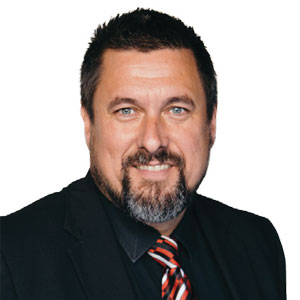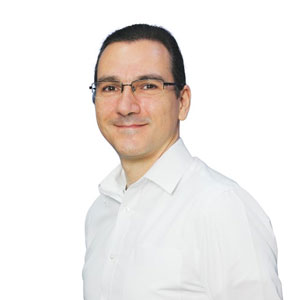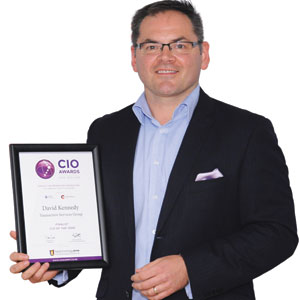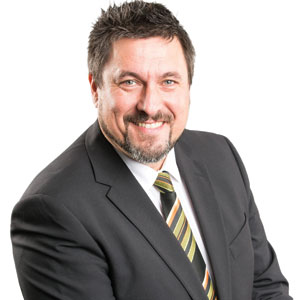THANK YOU FOR SUBSCRIBING

Innovating Government Bureaucracy
Seth Wainer, Program Director of innovation, Planning and Regional Development Department, Port Authority of New York and New Jersey

Government innovation is hard work.
Structurally, bureaucracies are designed to do the same thing today that they did yesterday. In many cases, this is acceptable. We wouldn’t want rules for birth certificates and building codes to change like fast fashion. Culturally, our society has come to expect this, which causes everyone to de-emphasize public sector’s role in innovation. Lastly, public finances are generally the same year-over-year. Without rapid growth, we don’t see natural opportunities to take on new missions with new resources.
These structural, cultural and financial factors are strong headwinds against trying new things. Over time, they result in as lack of dynamism that results in governments falling behind public expectations around goods and services. This chasm is now enormous: compare the stress of applying for a passport to the ease of an Amazon.com return.
I am comforted to know this was not always so, especially at The Port Authority of New York and New Jersey. We have a history of more than a century of remarkable milestones that included the longest bridge in the world, the tallest buildings in the world, the largest bus terminal in the world, the busiest bridge in the world, the birth of global containerized shipping, and invention of the E-ZPass toll reader. As we looked to reinvigorate the concept of innovation within the agency, we as an agency pondered how to recapture that historic momentum.
First, we accepted we had a problem.
During the nadir of the COVID-19 pandemic, Port Authority Executive Director Rick Cotton and Chairman Kevin O’Toole identified four major areas in need of strategic action: sustainability, revenue, customer service and innovation. My colleague Ai Yamanaka and I were asked to put together ideas and staff to develop a strategy for promoting long-term innovation within the agency.
AI and I pitched an idea: a so-called ‘innovation hub’ that is staffed by a few people but has dotted lines that reach far into our business departments overseeing the airports, bridges and tunnels, bus facilities, commuter rail, the East Coast’s busiest seaport and the World Trade Center campus. We are a massive agency with an expansive infrastructure portfolio, and we needed something that could mobilize a wide segment of the agency.
The Innovation Hub, or iHub as we call it, is our modern-day answer to the Port Authority’s legacy of innovation.
The iHub is tasked with sourcing, funding and executing pilot projects. When Ai and I pitched the idea of an employee innovation hub, we laid the groundwork for the iHub’s own pitch process for innovative ideas. We empower employees who have new ideas to peer-review pitches as a group and then pitch to agency executives. We make sure each pilot has simple benchmarks so we know if it worked, and provide support to employees on pitching, executing, and reporting back results. There’s no long approval process. So far, we have green-lit over 30 pilot projects and executed 15.
We will source any idea, but we have developed a few major themes based on our view that certain technologies may have an outsized impact on our business and the world of transportation: artificial intelligence, autonomous vehicles, electric flight, environmental sustainability, and automation. We aim to incorporate these themes into the agency’s everyday business practices. With this framework, we build one idea atop the other, often with the same teams involved. This is how we started with testing autonomous vehicles in a closed course, then in a tightly run platoon, then in mixed traffic.
Peter Drucker once said: ‘Culture eats strategy for breakfast.’ So, we took big steps to craft a culture of innovation. We instituted awards of up to $2,000 for employees who finish a pilot, regardless of its success. We invited outside voices for inspiration. We started a speaker series, hosting a new talk each month with luminaries such as Jennifer Pahlka and Anand Giridharadas who have helped inspire and educate us. And just like our iHub’s peer-review process, we listen to feedback both inside and outside the agency. We see new connections form between departments, and we are engaging in dialogue with our peer agencies in the New York-New Jersey region. Good ideas now stand a better chance of seeing the light of day.
The hub is two years old in a 103-year-old agency. But government innovation should have no end date as long as good government continues to exist.
It is and will always be hard work, but that’s what it will take to produce the kinds of outcome our customers, our children, and our planet deserve.
Weekly Brief
I agree We use cookies on this website to enhance your user experience. By clicking any link on this page you are giving your consent for us to set cookies. More info
Read Also













